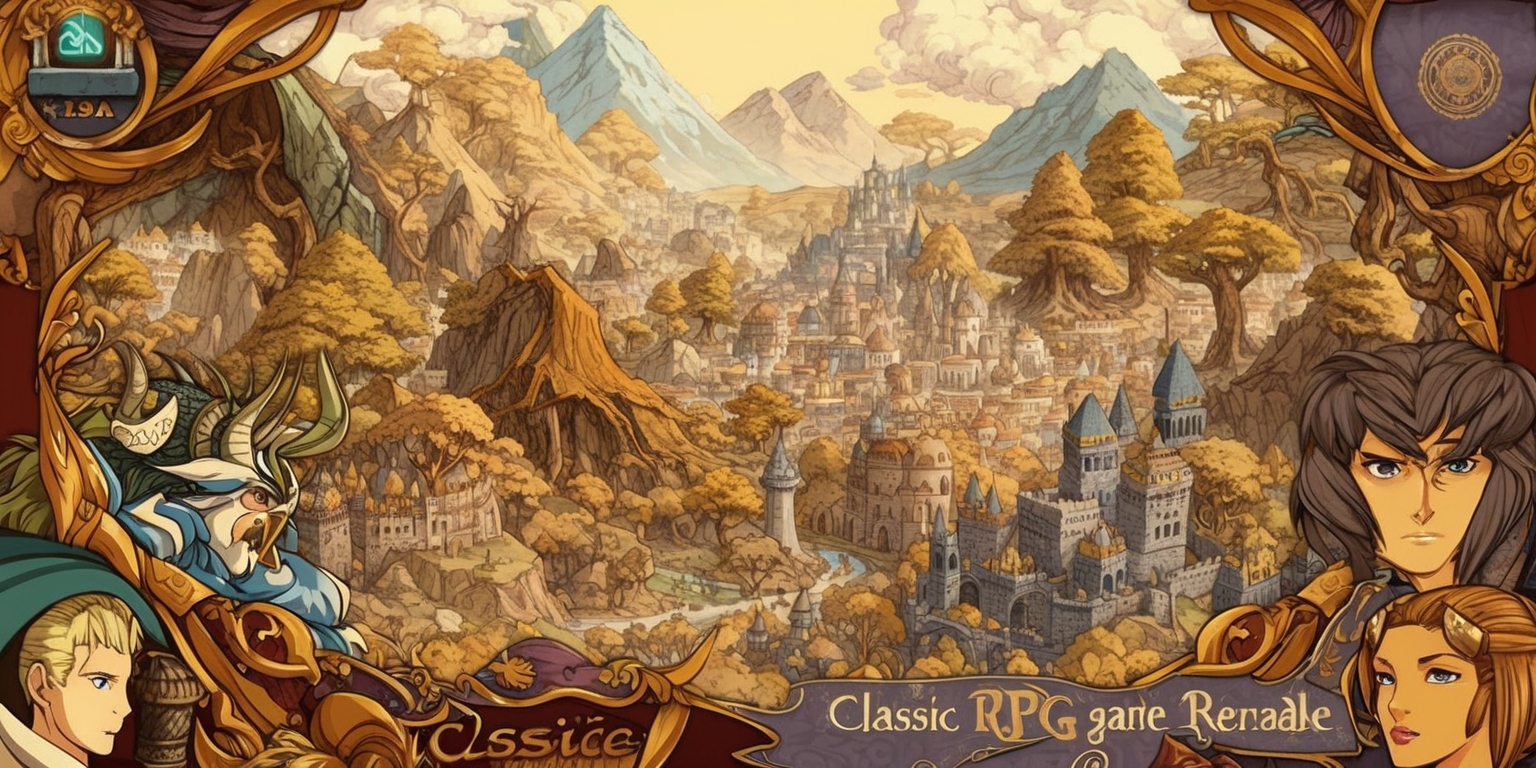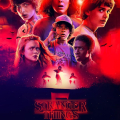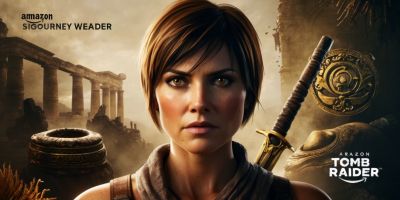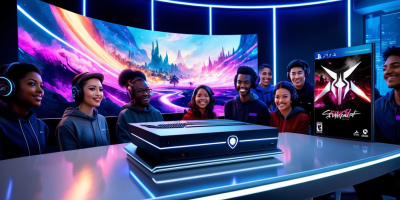Bridging Nostalgia and Innovation in a Classic Remake

Amidst the continually evolving sphere of video games, …, discussions about remaking beloved classics evoke both enthusiasm and deep concern. The blend of reverence for the original and the promise of modernized gameplay creates a dynamic tension that fuels debate among fans and developers alike. When it comes to a potential reimagining in a storied franchise, the stakes are high. This tension is particularly palpable when considering how modern technical and narrative innovations might alter longstanding experiences from the past. Reflecting on industry trends, game preservation, and the delicate art of adaptation prompts us to examine how a revitalized vision could reshape the way we understand a classic tale, without losing the soul that made it resonate with audiences over the years.
Speculations and Historical Preservation
The current chatter around remaking a legendary title brings to light a genuine concern over preserving gaming heritage. Behind this speculation lies the ongoing dialogue about the vast majority of games from earlier decades being rendered nearly inaccessible. Historical preservation in the gaming world is more vital than ever, as a minute fraction of older titles have survived through remasters or digital reissues. Developers and publishers are caught in a balancing act between reintroducing cherished experiences laced with nostalgia and modernizing them for contemporary play. Remastering classics without altering their core essence has been a successful pursuit in many franchises, yet transitioning into a full-fledged remake demands creative changes. The potential reimagining of a storied game suggests a future where much of its legacy may be revisited through fresh design philosophies and narrative adjustments, leaving fans both hopeful and wary of what may be altered or lost.
Modernization Versus Reverence
As rumors of an ambitious remake surface, the debate intensifies around how much alteration is acceptable before a classic loses its identity. The inherent charm of a treasured title is inextricably linked to its original gameplay mechanics, art style, and storytelling techniques. Modernization often means reworking these elements entirely, sometimes prioritizing real-time and dynamic action over the carefully structured methods that were once the norm. The challenge for developers lies in updating controls and visuals without stripping away the nuances that provided the game with its unique atmosphere. While action-oriented sequences and contemporary storytelling approaches can attract new players, there is a risk that the original’s timeless allure might be compromised. Every design decision in such a project resonates deeply with both new audiences and longtime enthusiasts who cherish the status quo.
Artistic Vision and Aesthetic Transformation
The artistic merits of the classic title have always played a defining role in its popularity. The original game is celebrated for its pre-rendered backgrounds and storybook-like illustrations, which Inspire a feeling of awe and everlasting elegance. With a planned remake, one pressing concern is whether the enchantment of those meticulously crafted visuals will survive the transition to fully rendered 3D environments. The delicate balance between honoring a stylistic tradition and embracing current graphical capabilities poses not only technical challenges but also artistic dilemmas. Modern techniques can amplify details and bring a sense of volume to scenes, yet they risk diluting the hand-painted charm that many fans hold dear. The interplay between traditional aesthetics and modern technology must be carefully orchestrated to preserve the signature ambiance that has historically defined the narrative’s visual impact.
Evolution of Gameplay Mechanisms

Among the aspects that set the original apart is its tactical turn-based combat system, a cornerstone that inspired thoughtful decision-making during each encounter. This methodical pace allowed players to engage deeply with strategy and character abilities. In contrast, the current trend toward more fluid, real-time combat introduces speed and intensity, which resonates with modern gaming sensibilities. Redeveloping the battle system in a classic title involves more than just aesthetic upgrades; it requires a philosophical shift in gameplay design. Adapting a much-loved system into a faster format raises questions about how internal mechanics For example, the real-time combat method known as the Active Time Battle (ATB) system can be integrated without sacrificing the inherent strategic depth. By reimagining these elements, developers can either enhance the engagement through innovation or inadvertently remove a measured cadence that fostered thoughtful play and personal discovery.
Reworking Narrative Structures and Iconic Moments
The narrative intricacy of the original game has long been hailed as one of its crowning achievements, with memorable story beats and captivating character Story arcs that have profoundly impacted players. A key area of debate has been… is whether a remake would preserve these legendary sequences or opt for significant reinterpretation. Changes in storytelling methods to cater to narrative trends, such as introducing non-linear elements or extensive cinematic sequences, can inadvertently disrupt the emotional cadence of the original narrative. Iconic moments, once punctuated by the predictable structure of the game’s unfolding drama, could be reworked in ways that diminish their intended impact. In reexamining key scenes, developers must navigate the fine line between modern narrative experimentation and the necessity of retaining the emotional resonance that built the game’s legacy over decades.
Maintaining Character Complexity in a New Era
The characters in the classic title are one of its greatest strengths, portrayed with distinct personalities and developmental arcs that challenged stereotypes and encouraged nuanced interpretation. In a modern remake, there is an inherent temptation to alter character traits for contemporary sensibilities, reshaping behaviors and interpersonal dynamics. Such changes may be intended to align with modern expectations, yet they risk softening the edges that made these characters so compelling. For instance, certain personality quirks are integral to the character’s journey and overall impact on the narrative. Transforming these elements for a broader audience could inadvertently remove the layered motivations and emotional depth that originally resonated with fans. Thus, maintaining the integrity of character design while integrating modern values requires a delicate balance that respects both tradition and progress.
Innovative Reinterpretation of Classic Mechanics
The challenge of reinterpreting classic game mechanics lies in innovating without erasing the distinct identity that made the original memorable. For many aficionados, gameplay elements such as timing-based triggers and impact-driven transformation sequences were more than just mechanics; they were integral parts of the narrative and emotional rhythm of the game. The introduction of new gameplay strategies, while potentially enhancing the overall Accumulated expertise should be considered in relation to the potential hazards of overhauling the tried-and-true systems that supported the game’s unique pacing and strategic depth. To maintain the timeless spirit of bygone eras while embracing new technologies, developers need to craft a hybrid system that respects traditional elements even as it introduces fresh challenges. Every change in gameplay has the potential to redefine player interaction in profound ways, making the careful amalgamation of old and new a central point of discussion among gaming purists.
Challenges of Updating Iconography and Symbolic Moments
One aspect of any potential remake revolves around the famed icons and visuals that have evolved into synonymous with the original title. Specific episodes and character moments are etched into the collective memory of its diverse fan base, serving as benchmarks of emotional storytelling and narrative excellence. Revisiting these treasured elements means confronting the possibility that they may lose some of their original gravity if presented through modern reinterpretations. Adjustments in camera angles, special effects, and dramatic timing could alter how these moments are perceived, possibly rendering them less impactful. The task is to evolve the presentation of these key scenes without straying too far from the deeply embedded symbols that anchored the original experience. This delicate process presents a significant hurdle for developers striving to capture the exact magic that once felt intimate and transformative.
Technological Advances and Their Impact on Design
The rapid progress in game development technology over In recent decades, the method in which things are approached has undergone a dramatic transformation which video games are designed, rendered, and experienced. High-definition graphics, advanced physics engines, and real-time lighting effects provide opportunities to create immersive Realms that once existed solely in the realm of imagination. In the context of remaking a classic title, these tools can serve as a double-edged sword. While they hold the potential to breathe new life into a familiar setting, there is an inherent risk of over-polishing elements that were originally intended to evoke a distinct artistic charm. The incorporation of modern design philosophies into a game steeped in history demands an acute sensitivity to detail, ensuring that new visual and technical enhancements complement rather than overshadow the character and mood established by the original. The outcome relies on a careful blend of nostalgia and innovation, sculpted with precision and respect.
Revisiting Core Themes Through a Contemporary Lens
The thematic underpinnings of the original game resonate on multiple levels, addressing universal ideas of identity, purpose, and transformation. Amid the spectrum of potential updates, there exists the opportunity to reexamine these themes through the prism of modern cultural and social narratives. However, this reinterpretation may inherently shift the tonal balance that once defined the experience. In a remake, subtle adjustments in dialogue or narrative context could lead to layers of meaning that differ vastly from those instilled decades ago. The original framework carefully interwove philosophical musings with emotional storytelling, creating a tapestry of ideas that continue to inspire discussion. Retaining this delicate interplay of themes while infusing them with contemporary insights is a creative challenge that underscores the razor-thin margin between revolutionary innovation and inadvertent dilution of the original message.
Balancing Innovation with Time-Honored Identity
When contemplating an extensive remake of a revered title, the inherent tension lies in finding the sweet spot between bold innovation and retaining the familiar aura of the original. This balance is "integral to every design decision, as" developers seek to streamline gameplay for modern audiences without stripping away the personality and quirks that made the game a timeless masterpiece. Adjustments in the narrative, visual style, and interactivity must be implemented with an acute awareness of what fans hold dear. Each aspect of enhancement carries the dual possibility of either enriching the player experience or undermining the original’s legacy. With the gaming landscape shifting toward a more dynamic and fast-paced paradigm, capturing the nuanced essence of a nostalgic world remains both a formidable challenge and a profound responsibility for those tasked with reimagining this classic experience.












